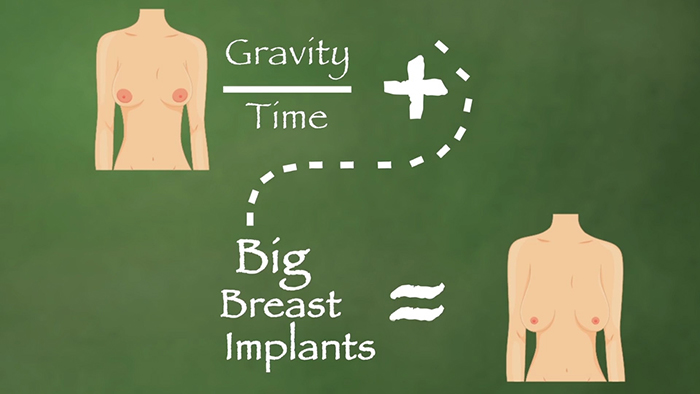Breast augmentation is perennially ranked the #1 or #2 most popular aesthetic surgery performed each year. The objective is obvious – bigger, more shapely breasts. Size is thought to be a personal preference. Some like oranges, some like grapefruits… but what about the gals who want cantaloupes? Big implants are desired but are also problematic.
Dr. William P. Adams Jr. moderates a round table debate with Dr. Clifford Clark and Dr. Bruce Van Natta to pose the question, “When is big too big?” And is there such a thing as a “tipping point” either literally or figuratively?
A Conversation on Sizing
One of the most widespread misconceptions is that implants come in cup sizes. They don’t, and there’s a good reason. When you consider all the shapes and sizes of the general population of women, it’s easy to see why a B cup on one would look very different than a B cup on another. Height, weight, frame all influence breast size. The volume of an implant is actually measured in cc’s. An example: 300 cc’s equals roughly 10 ounces. Dr. Clark contends that while personal choice certainly plays a role in implant selection, the individual evaluation during consultation is very important. “Implants are predicated on body physique with the most important dimension being the width of the chest.” On a woman with a small frame, a smaller implant might be recommended – 400-500cc range – to give a great enhancement. But what if that same woman wants a more dramatic change?
The Debate on Going Bigger
Dr. Bruce Van Natta would likely discourage the smaller-framed woman from seeking large breasts. “When the base width is limited and you try to maximize the projection, you are stretching those lower tissues and eventually there is a tipping point.” Dr. Clark concurs that no one would recommend 1000 cc’s because breast tissues cannot support that volume long term, but he is more comfortable than Dr. Van Natta with satisfying his patient’s desire for maximum projection – successfully. Both surgeons agree that it is incumbent upon the physician to explain the risks and consequences of large implants. “A woman’s breasts are affected by gravity over time and when you increase the mass it will influence the breasts over time. So they should have that understanding up front,” says Clark.

Risks of Big Implants
It is important to delineate between a large implant and an overly large implant. It all comes down to an individual’s tissues and physique and what it can reasonably support. A board certified plastic surgeon will typically advise against an overly large implant because of the risks. Yet, many patients insist on a certain size and will shop until they find a surgeon to give them what they want. What are the risks?
First and foremost, improperly fitted breast implants can lead to poor breast aesthetics, defeating the entire purpose of the enhancement. In addition, overly large implants may lead to sagging, tissue thinning, nipple numbing, implant visibility, and back and shoulder pain. Some questions to ask yourself:
- Do I want a natural or obvious look?
- How will my clothes fit?
- Will large breasts hinder my activities?
- Will large breasts make me look matronly in 10-20 years?
- What if I want to downsize one day?
Regional Taste
There are definite tendencies in implant sizes chosen depending upon the region of the country. Statistically speaking, patients in Florida, Texas and California have an appetite for larger implants. Dr. Clark, who practices in Florida, sees this reflected in his consultations. Dr. Van Natta resides in Indiana, where the national trend toward smaller breasts is more evident. What works in Indiana might not work in Florida.
Ultimately, the decision rests with the patient. Your body, your choice. Just be certain to have an honest discussion with a board certified plastic surgeon to be sure you are willing to accept the possible risks.